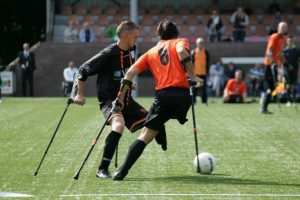Patient X is a 36-year-old Hausa male involved in a ghastly car accident a few years ago. His leg was badly injured and had to be amputated. Sometimes, patient X feels pain in the non-existent limb.
This type of pain is called what? Explain the Physiology behind this pain.


This is called Phantom limb pain , painful sensations that seem to be coming from the part of the limb that is no longer there. The limb is gone, but the pain is real.
It is called phantom limb sensation.
This is because, after amputation the cut end heals with scar formation and the cut end of the nerve fuse with the scar so any stimulation of the scar send a signal that mimic the pain from unamputated limb (tissue).
According to what I’ve watched in some medical films I think the name of the pain is Phantom Limb pain it could occur in the arms and legs and the pain could go away for some people but for others it could be long lasting and very severe , according to the series I believe some of the patient has the pain because of the feeling they get that their legs are amputated ,I’m not really sure of this I’m just in my first year I’ve only heard of this in some of the movies I’ve watched
Phantom pain
Phantom limb pain
Don’t really know the cause
Patient X suffers from Phantom Limb Pain. This is the type of pain experienced in a non existent or amputated Limb as though the limb was intact.
Sensory stimulations are localized or represented in the brain but perceived peripherally in a specific region of the body i.e each peripheral segments of the body are represented or mapped in the cerebral cortex. The modalities of sensations such as pain, temperature, pressure, etc is the function of the cortical tissues of the brain and not the receptors transducing these information.
Recall, receptors are a group of nerve cells that receive motor or sensory stimuli. They are capable of transducing this stimuli from mechanical energy into electrical activities or impulses i.e in the case of sensory stimulations. These impulses are then conducted via axonal processes of the Peripheral Nervous System into the Central Nervous System i.e brain and spinal cord via Ascending tracts. These tracts then terminate in specific areas of the brain’s cortical gray matter where these impulses are interpreted and the information conveyed to the regional tissues stimulated
Thus in Phantom Limb Pain, even though the Limb is non existent; the area of the Limb remains fully represented in the cerebral cortex, thus the patient experiences pain and other sensations in the amputated Limb although absent physically.
The ABOVE is the Physiology behind the Phantom Limb Pain.